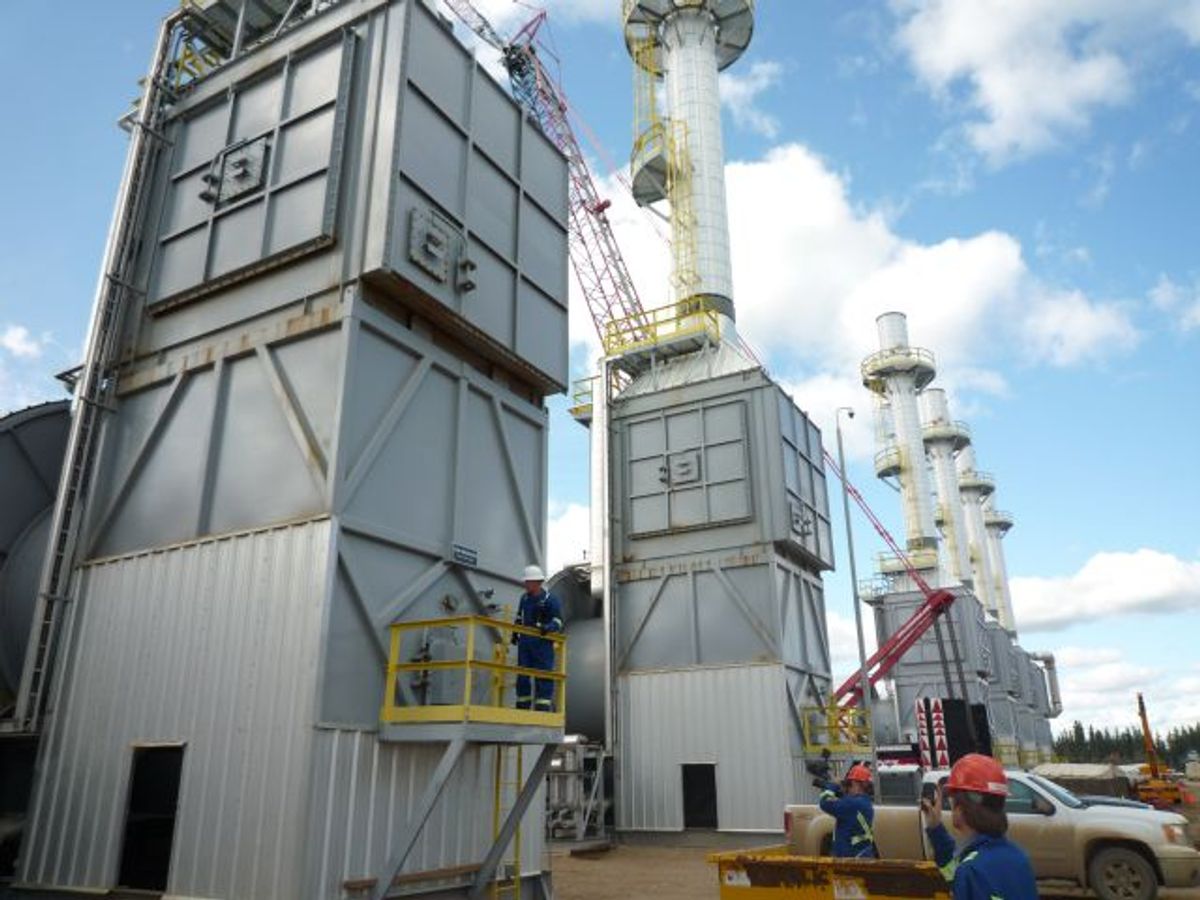Late last week President Barack Obama deferred consideration of the Keystone XL oil pipeline, designed to ship Alberta petroleum to the Gulf Coast, until after next year's U.S. elections. Obama's move immediately sparked vows in Canada to redirect crude exports to Asian markets less angst-ridden by the environmental impacts associated with tapping Alberta's tough, tarry petroleum. A smarter strategy would be to reduce those impacts, starting with the black mark that brought Keystone XL to national attention: oil sands crude's bloated carbon footprint.
The oil sands are already in the midst of a radical technology shift, as open-pit mines give way to drilling to reach the 80 percent of Alberta's bitumen reserves buried too deep to reach from the surface. So far that transition has boosted energy consumption, as so-called in situ extraction sites pump 250°C steam into the ground to melt the bitumen in place and then suck a steam-bitumen mix to the surface. Burning fossil fuels to make steam gives fuels refined from in situ bitumen a carbon footprint 2-3 times greater than gasoline refined from conventional crude.
There is, however, a cooler way to extract deep bitumen: dissolving the buried bitumen in place rather than melting it. My feature report in the November/December issue of MIT's Technology Review magazine profiles two companies -- oil sands leader Cenovus Energy and Calgary-based upstart N-Solv -- that are using lighter hydrocarbons such as propane and butane to extract and recover bitumen.
Cenovus has achieved a 15 percent reduction in energy use per barrel of bitumen with a hybrid extraction method combining butane and steam, and says optimizing the process could cut another 15 percent. N-Solv is testing a purely solvent-based process, eliminating steam altogether in a bid to slash greenhouse gas emissions per barrel by 80-90 percent. Imagine the impact on the oil sands pipeline debate.
If evoking such a radical shift in performance sounds pollyannish, consider recent trends in water usage by in situ bitumen producers. Over the past five years or so they have stopped using potable surface waters for steam generation, tapping deep saline acquifers instead; they also began to heavily recycle water. Last year Cenovus' Christina Lake site, which I visited for Technology Review, used over 5000 cubic meters of water per day, of which less than 4 percent was potable.
The lesson is simple: oil sands extraction is a young industry capable of rapid improvement when government raises the bar and demands change. Alberta's Energy Resources Conservation Board told in situ producers to slash water use, and they jumped to it. With an equally tough approach to greenhouse gas emissions -- be it through mandates or a carbon tax/price -- Canadians can respond meaningfully to their critics.
In fact, only such change from within can save the oil sands industry according to environmentalists and even some industry sources in Calgary that I interviewed this fall. The onus is on Alberta says Jason Switzer, director of corporate consulting for the Pembina Institute, the Calgary-based environmental think-tank that has been the oil sands industry’s closest and toughest critic for more than a quarter of a century: "The government needs to show it’s willing to kick some shins. Because otherwise Keystone XL and pipelines to the coast may not get approved and the oil sands will just be a nice small side business for a few large companies, instead of developing to the scale the province would like to achieve.”
John Nenniger, the founder and CEO of N-Solv, was less diplomatic. Nenniger called today's energy-wasting oil sands producers, "an accident waiting to happen if they don’t evolve quickly."
The U.S. has even more to gain than Canada from a cleaner oil sands industry. The upgrade would encourage the world's biggest consumer of petroleum to access more of its imported oil from a neighbor that has been consistently stable, democratic, and friendly. Those are abnormally good qualifiers for an oil supplier, encouraging a path towards taming one of the biggest elephants in U.S. budget debates: military spending to secure the Middle East.
Peter Fairley has been tracking energy technologies and their environmental implications globally for over two decades, charting engineering and policy innovations that could slash dependence on fossil fuels and the political forces fighting them. He has been a Contributing Editor with IEEE Spectrum since 2003.



